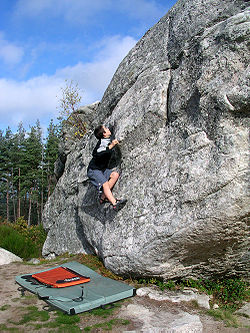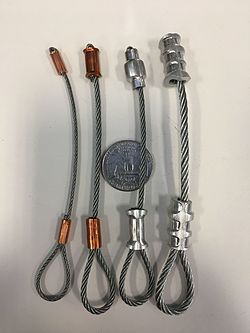
| Part of a series on |
| Climbing |
|---|
| Lists |
| Types of rock climbing |
| Types of mountaineering |
| Other types |
| Key actions |
| Key terms |
Glossary of climbing terms relates to rock climbing (including aid climbing, lead climbing, bouldering, and competition climbing), mountaineering, and to ice climbing. [1] [2] [3]
Contents
The terms used can vary between different English-speaking countries; many of the phrases described here are particular to the United States and the United Kingdom.










































































































